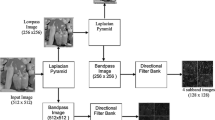Abstract.
Authentication of image data is a challenging task. Unlike data authentication systems that detect a single bit change in the data, image authentication systems must remain tolerant to changes resulting from acceptable image processing or compression algorithms while detecting malicious tampering with the image. Tolerance to the changes due to lossy compression systems is particularly important because in the majority of cases images are stored and transmitted in compressed form, and so it is important for verification to succeed if the compression is within the allowable range.
In this paper we consider an image authentication system that generates an authentication tag that can be appended to an image to allow the verifier to verify the authenticity of the image. We propose a secure, flexible, and efficeint image authentication algorithm that is tolerant to image degradation due to JPEG lossy compression within designed levels. (JPEG is the most widely used image compression system and is the de facto industry standard.) By secure we mean that the cost of the best known attack againt the system is high, by flexible we mean that the level of protection can be adjusted so that higher security can be obtained with increased length of the authentication tag, and by efficient we mean that the computation can be performed largely as part of the JPEG compression, allowing the generation of the authentication tag to be efficiently integrated into the compression system. The authentication tag consists of a number of feature codes that can be computed in parallel, and thus computing the tag is effectively equivalent to computing a single feature code. We prove the soundness of the algorithm and show the security of the system. Finally, we give the results of our experiments.
Similar content being viewed by others
References
Bhattacharjee S, Kutter M (1998) Compression tolerant image authentication. In: Proceedings of the international conference on image processing, Chicago, 4-7 October 1998, pp 435-439
Cheng S, Litva P, Main A (2001) Trusting drm software. In: Proceedings of the W3C workshop on DRM, January 2001. http://www.w3.org/2000/12/drm-ws/pp/cloakware.html
Colbourn CJ, Dinitz JH (eds) (1996) CRC handbook of combinatorial designs. CRC Press, Boca Raton, FL
Fridrich J (1998) Image watermarking for tamper detection. In: Proceedings of the international conference on image processing, Chicago, 4-7 October 1998, pp 404-408
ISO/IEC (1998) MPEG Standard. http://www.mpeg.org
ITU (1993) JPEG Standard: CCITT Recommendation T.81. International Telecommunications Union, Geneva
Kirovski D, Peinado M, Petitcolas FAP (2001) Digital rights management for digital cinema. In: Proceedings of Security in Imaging: Theory and Applications, international symposium on optical science and technology, San Diego, 29 July-3 August 2001, pp 105-120
Lam EY, Goodman JW (2000) A mathematical analysis of the DCT coefficient distributions for images. IEEE Trans Image Process 9:1661-1666
Lin C, Chang S (1997) A robust image authentication method distinguishing JPEG compression from malicious manipulation. CU/CTR Technical Report 486-97-19
Lin C-Y, Chang S-F (2001) SARI: Self-authentication-and-recovery image watermarking system. In: Proceedings of ACM Multimedia 2001, Ottawa, Ontario, Canada, 30 September-5 October 2001, pp 628-629
Memon N, Shende S, Wong P (1999) On the security of the yueng-mintzer authentication watermark. In: Final program and proceedings of IS&T PICS 99, Savannah, Georgia, USA, 25-28 April 1999, pp 301-306
Radhakrishnan R, Memon N (2001) On the security of the SARI image authentication system. In: Proceedings of the international conference on image processing, Thessaloniki, Greece, 7-10 October 2001, pp 971-974
Stickney B (1999) MPEG-2 or MJPEG? Videomedia. Available at: http://www.videomedia.com/mpeg.htm
Uehara T, Safavi-Naini R (2002) On (in)security of “a robust image authentication method”. In: Proceedings of the IEEE Pacific Rim conference on multimedia, Hsinchu, Taiwan, 16-18 December 2002, pp 1025-1032
Weisstein EW (1999) Steiner system - from mathworld. MathWorld. Available at: http://mathworld.wolfram.com/SteinerSystem.html
Wu M, Liu B (1999) Attacks on digital watermarks. In: Proceedings of the 33rd Asilomar conference on signals, systems, and computers, Pacific Grove, CA, 24-27 October 1999, pp 1508-1512
Wu W, Liu B (1998) Watermarking for image authentication. In: Proceedings of the international conference on image processing, Chicago, 4-7 October 1998, pp 437-441
Kuribayashi M, Tanaka H (2000) A watermarking scheme based on the characteristic of addition among DCT coefficients. In: Proceedings of ISW 2000: 3rd Information Security workshop, Wollongong, NSW, Australia, 20-21 December 2000, pp 1-14. Available at: http://www.itacs.uow.edu.au/ccsr/proceedings/isw2000/ index.html
Author information
Authors and Affiliations
Corresponding author
Rights and permissions
About this article
Cite this article
Uehara, T., Safavi-Naini, R. & Ogunbona, P. A secure and flexible authentication system for digital images. Multimedia Systems 9, 441–456 (2004). https://doi.org/10.1007/s00530-003-0117-0
Issue Date:
DOI: https://doi.org/10.1007/s00530-003-0117-0




